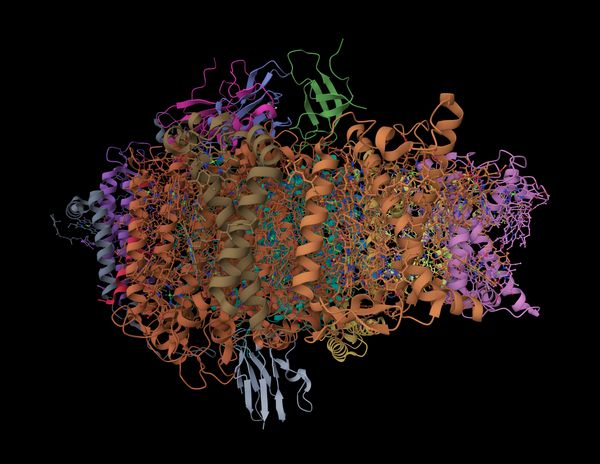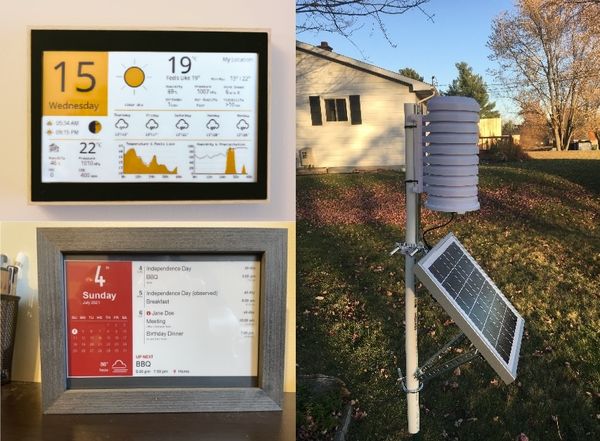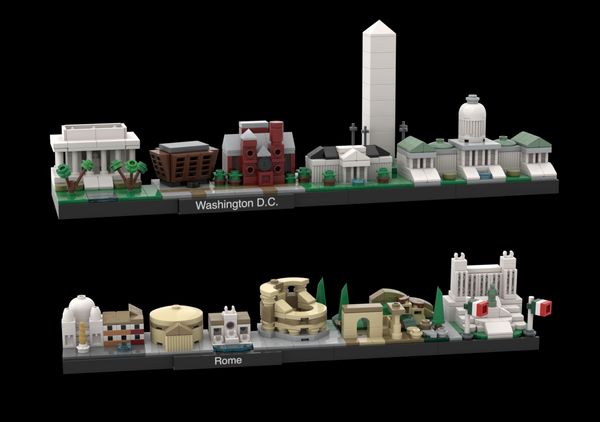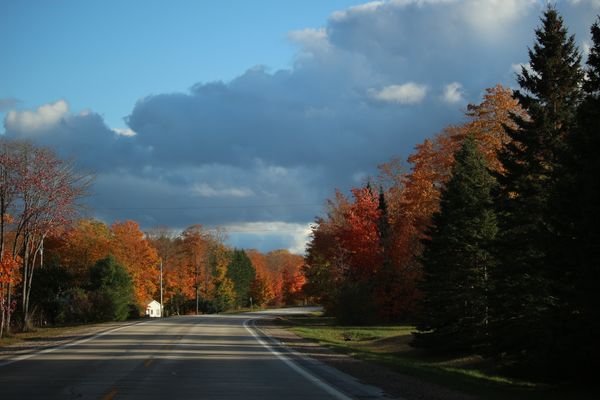Hi. I'm Sebastian.
Currently Living in Europe; exploring the Regulation of Photosynthesis.
Plant Photosynthesis
In nature, plants face the challenge of rapidly changing light intensities amongst many other abiotic conditions, transitioning from full sunlight to shade, often within seconds or even shorter time scales. The cause can be scattered clouds, wind-moving leaves, or light scattering throughout the canopy.
I'm interested in how photosynthesis is regulated under these conditions, so harmful by-products can be avoided, and the photosynthetic machinery is sufficiently protected, yet over-protection and resulting inefficiency are avoided.
MultispeQ Photosynthesis Research
During my time in Dr. David Kramer's lab at Michigan State University, I contributed to the development of an innovative research platform to enable collaborative spectrophotometric data collection and analysis of photosynthetic data. My role involved creating online data visualizations, a desktop application, documentation, and testing hardware - all done in coordination with an interdisciplinary team.
This allowed me to apply and improve my skills in software development, data science, and photosynthesis research to advance a novel platform aimed at sharing photosynthetic measurements in new ways. These tools can now be used in my research on the regulation of photosynthesis in situ at a larger scale and under various, real-world environmental conditions.
Kuhlgert, S., Austic, G., Zegarac, R. Osei-Bonsu, I.,Hoh, D., Chilvers, M. I., et al. (2016). MultispeQ Beta: a tool for large-scale plant phenotyping connected to the open PhotosynQ network. R. Soc. Open Sci. 3, 160592. doi:10.1098/rsos.160592
 MultispeQ (beta version) used for proof of concept and inital field trials (doi:10.1098/rsos.160592).
MultispeQ (beta version) used for proof of concept and inital field trials (doi:10.1098/rsos.160592).Global Data Photosynthesis Research
After the initial beta version of the MultispeQ, the current version and accompanying platform have enabled thousands of users globally to collect millions of measurements to explore plants' photosynthetic phenotypes. These photosynthetic measurements were collected in lab and greenhouse settings and, more critically, in real-world field environments and natural habitats.
They include fluorescence changes measured using the Pulse-Amplitude-Modulation (PAM) to determine parameters like quantum efficiency (Φₗₗ), the absorbance-based electrochromic shift (ECS), and relative chlorophyll content. The measurements can be accompanied by environmental data including contactless leaf temperature.
This large, open, and growing data collection will hopefully enable a better understanding of how photosynthesis is regulated in dynamic environments.
 Photosynthesis Research Projects around the World using MultispeQ colored by measurements per Project (Data: PhotosynQ, Inc. 2023)
Photosynthesis Research Projects around the World using MultispeQ colored by measurements per Project (Data: PhotosynQ, Inc. 2023)Photosystem I Photosynthetic Machinery
The photosynthetic machinery in higher plants, as well as in many groups of the green clade, consists of two photosystems, I and II. While photosystem II is the first step in the electron transport chain to split water, photosystem I catalyzes the final step, transferring electrons from plastocyanin to ferredoxin.
My graduate work in Dr. Michael Hippler's lab focused on the interaction between photosystem I and plastocyanin in Chlamydomonas reinhardtii and how small modifications to specific amino acids at the photosystem's donor side can alter the binding kinetics and drastically impact the rate of photosynthesis as a whole.
Kuhlgert, S., Drepper, F., Fufezan, C., Sommer, F. & Hippler, M. Residues PsaB Asp612 and PsaB Glu613 of Photosystem I Confer pH-Dependent Binding of Plastocyanin and Cytochrome c 6. Biochemistry-us 51, 7297–7303 (2012) doi: 10.1021/bi300898j.

Experience
- 2022-2024
- Science Research Specialist, Plant Research Lab, Michigan State University, USA
- 2013-2022
- Postdoctoral Associate, Plant Research Lab, Michigan State University, USA
- 2015
- Co-founder of PhotosynQ, Inc.
- 2007 - 2012
- Graduate Student, Institute of Plant Biology and Biotechnology, University of Münster, Germany
- 2002 - 2007
- Under Graduate Student, University of Münster, Germany
Skills
My work in plant science includes Biochemistry, Spectroscopy, Proteomics, Molecular Biology mainly involving Chlamydomonas and Arabidopsis and large scale data analysis of photosynthetic measurements collected mainly on crops in growth chambers and fields.
Programming languages used in different projects include JavaScript, Python, R, PHP, SQL (SQLite, MySQL, PostgreSQL) and Arduino/C++.
Personally, I'm interested in photography, traveling, IoT, music (guitar, bass), cooking and tinkering with software and technology.
Languages
- German - Native
- English - Fluent
Publications
- Milrad, Y., Wegfemann D., Kuhlgert S., Scholz M., Younas M., Vidal-Meireles A., and Hippler M. (2025) Insights into Plastocyanin–Cytochrome b₆𝑓 Formation: The Role of Plastocyanin Phosphorylation. Plant Physiology (doi:10.1093/plphys/kiaf269)
- Naschberger, A., Mosebach, L., Tobiasson, V., Kuhlgert, S., Scholz, M., Perez-Boerema, A., Ho, T. T. H., Vidal-Meireles, A., Takahashi, Y., Hippler, M., and Amunts, A. (2022) Algal photosystem I dimer and high-resolution model of PSI-plastocyanin complex. Nat Plants, 1–11. (doi:10.1038/s41477-022-01253-4)
- Caspy, I., Fadeeva, M., Kuhlgert, S., Borovikova-Sheinker, A., Klaiman, D., Masrati, G., Drepper, F., Ben-Tal, N., Hippler, M. and Nelson, N. (2021) Structure of plant photosystem I-plastocyanin complex reveals strong hydrophobic interactions. Biochem J 478, 2371–2384. (doi:10.1042/bcj20210267)
- Kanazawa, A., Chattopadhyay, A., Kuhlgert, S., Tuitupou, H., Maiti, T. and Kramer, D. M. (2021) Light potentials of photosynthetic energy storage in the field: what limits the ability to use or dissipate rapidly increased light energy? Roy Soc Open Sci 8, 211102. (doi:10.1098/rsos.211102)
- Lucker, B., Schwarz, E., Kuhlgert, S., Ostendorf, E. and Kramer, D. M. (2017) Spectroanalysis in native gels (SING): rapid spectral analysis of pigmented thylakoid membrane complexes separated by CN–PAGE. Plant J 92, 744–756. (doi:10.1111/tpj.13703)
- Kuhlgert, S., Austic, G., Zegarac, R., Osei-Bonsu, I., Hoh, D., Chilvers, M. I., Roth, M. G., Bi, K., TerAvest, D., Weebadde, P., et al. (2016) MultispeQ Beta: a tool for large-scale plant phenotyping connected to the open PhotosynQ network. Roy Soc Open Sci 3, 160592. (doi:10.1098/rsos.160592)
- Kuhlgert, S., Drepper, F., Fufezan, C., Sommer, F. and Hippler, M. (2012) Residues PsaB Asp612 and PsaB Glu613 of Photosystem I Confer pH-Dependent Binding of Plastocyanin and Cytochrome c 6. Biochemistry-us 51, 7297–7303. (doi:10.1021/bi300898j)
- Specht, M., Kuhlgert, S., Fufezan, C. and Hippler, M. (2011) Proteomics to go: Proteomatic enables the user-friendly creation of versatile MS/MS data evaluation workflows. Bioinformatics 27, 1183–1184. (doi:10.1093/bioinformatics/btr081)
- Winkler, M., Kuhlgert, S., Hippler, M. and Happe, T. (2009) Characterization of the Key Step for Light-driven Hydrogen Evolution in Green Algae. J Biol Chem 284, 36620–36627. (doi:10.1074/jbc.m109.053496)
- Allmer, J., Kuhlgert, S. and Hippler, M. (2008) 2DB: a Proteomics database for storage, analysis, presentation, and retrieval of information from mass spectrometric experiments. Bmc Bioinformatics 9, 302–302. (doi:10.1186/1471-2105-9-302)
- Weinl, S., Held, K., Schlücking, K., Steinhorst, L., Kuhlgert, S., Hippler, M. and Kudla, J. (2008) A plastid protein crucial for Ca2+‐regulated stomatal responses. New Phytol 179, 675–686. (doi:10.1111/j.1469-8137.2008.02492.x)
- Irmtraud Beyer, Hans-Peter Krull, Sebastian Kuhlgert 2001, Natura aktuell. ISBN:978-3-12-043492-4
Past & Current Projects
After years of making music, moving overseas, and having to leave all the instruments behind, I looked for some new projects.
My work introduced me to electronics and technologies like 3D printing and laser cutting. Traveling was a good reason to get a new camera and start taking pictures and programming was always a passion of mine.

Bits and Pieces From Underneath the Paper Pile
Some small projects from over the years and code bits from a long time ago; were polished and brought back to life. Most of them were either part of a work project or were just from tinkering around in my free time. Some of them are more recent and part of trying out new libraries and front-ends.
All Bits and PiecesElectronics Tinkering with the IoT
Through my work, I got introduced to the world of electronics, which doesn't mean I can now design my PCBs, but thanks to the availability of breakout boards and beginner-friendly hardware, I finished some projects that are now used in my everyday life including a display for weather forecast, a calendar and a weather station.
Especially the eInk technology is fascinating since, in combination with an ESP32 to access online sources, it allows to run projects displaying current data for months at a time on a single charge.

Data Visualization Calendar Heatmap
Calendar heatmaps are a great tool to visualize clusters, outliers, trends, and seasonal cycles over different time periods, using a calendar layout with color gradients.
The plugin I built for the JavaScript library jQuery allows to generate an HTML heatmap calendar that can be integrated into a website and dynamically be updated.
Since the jQuery plugin doesn't produce a vector-based graphic (SVG), I also created a small tool, that generates such graphics from data files with rich modification options and that doesn't require programming knowledge.

LEGO® bricks My Own Creations
Buying the Chicago skyline model from the Architecture line a couple of years ago got me back into building with LEGO. Due to the lack of physical bricks, I started using the fantastic editor Studio 2.0 to design my own creations after so many years of LEGO abstinence.
Cityscapes in the style of the LEGO Architecture line at a micro-scale have been a fun challenge to create. A lot of places I have visited are unavailable in the official LEGO catalog and a good place to start for your own collection.


USA Michigan
Si Quaeris Peninsulam Amoenam Circumspice
Coming to the Mitten State to work in photosynthesis research and staying for over a decade, revealed that there is a lot more to it than cars and snow. Very friendly and welcoming people (Trolls and Yoopers alike), the Lakes, going over the Bridge "Up North", lots of Nature, Dunes, Hiking, Fireflys, two Seasons - Winter and Road Construction, Indian Summer, Cherries, Apple Picking, Pop, Faygo, Tulips, Olds, the Henry Ford, Motown and so much more…
Photography Landscapes
Living and traveling in Michigan provided ample opportunities to take pictures of the beautiful landscape. Especially fall and winter present a plethora of possibilities when traveling Up North if you don't mind a crisp cold day.
Joining the Mid Michigan Photography Club was not only a great opportunity to meet people who are passionate about photography but to get out, shoot, and discover new places in the greater Lansing area.






